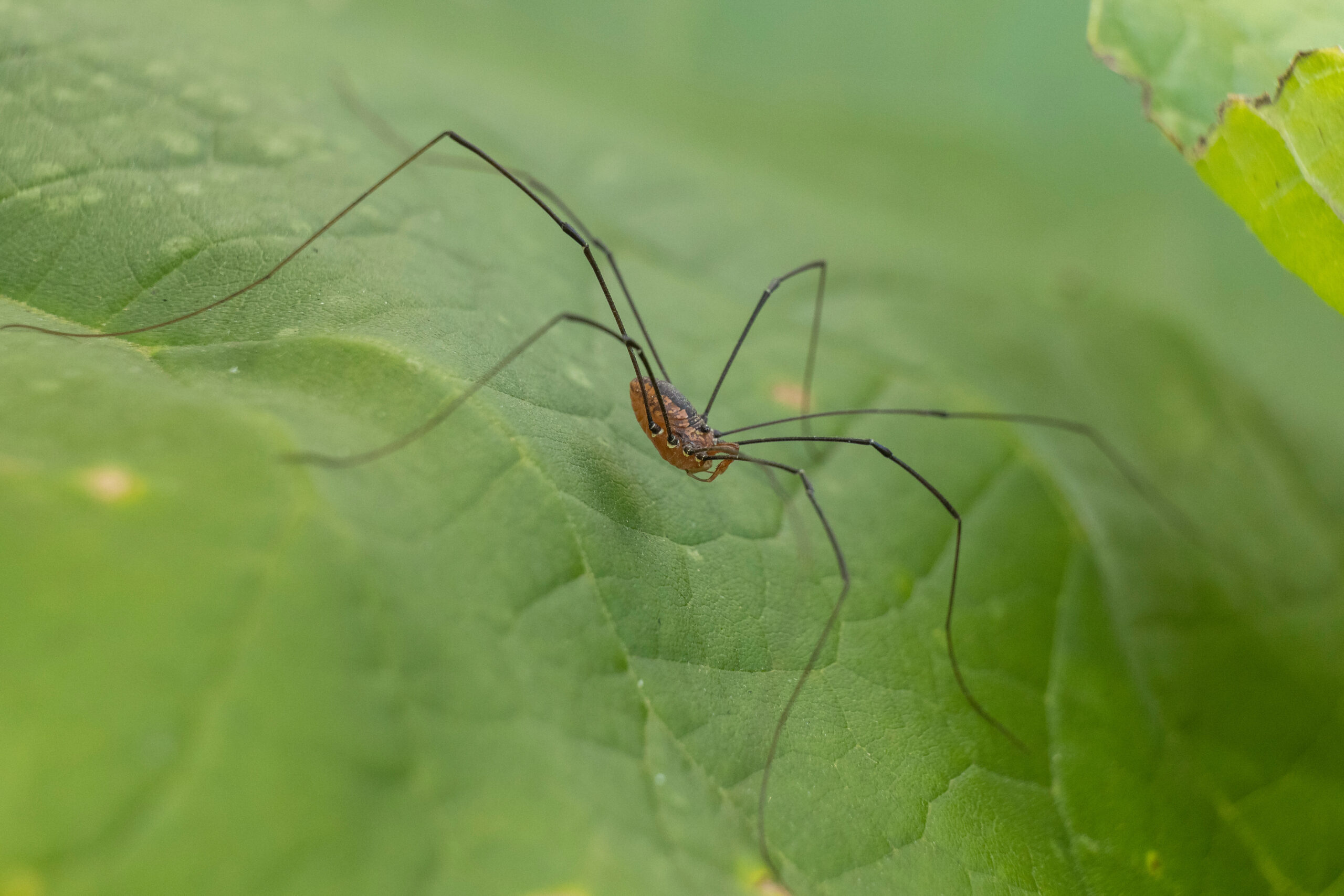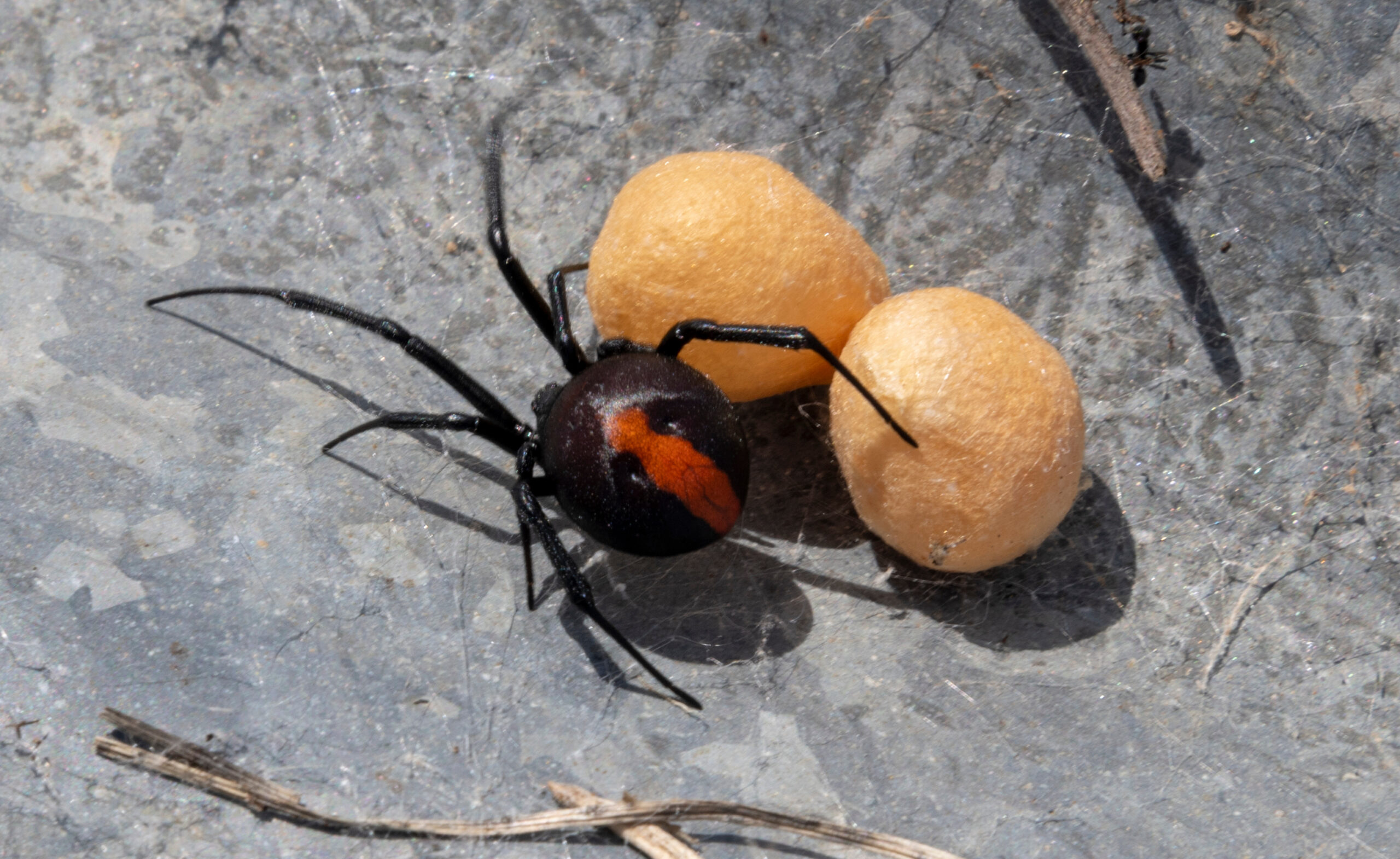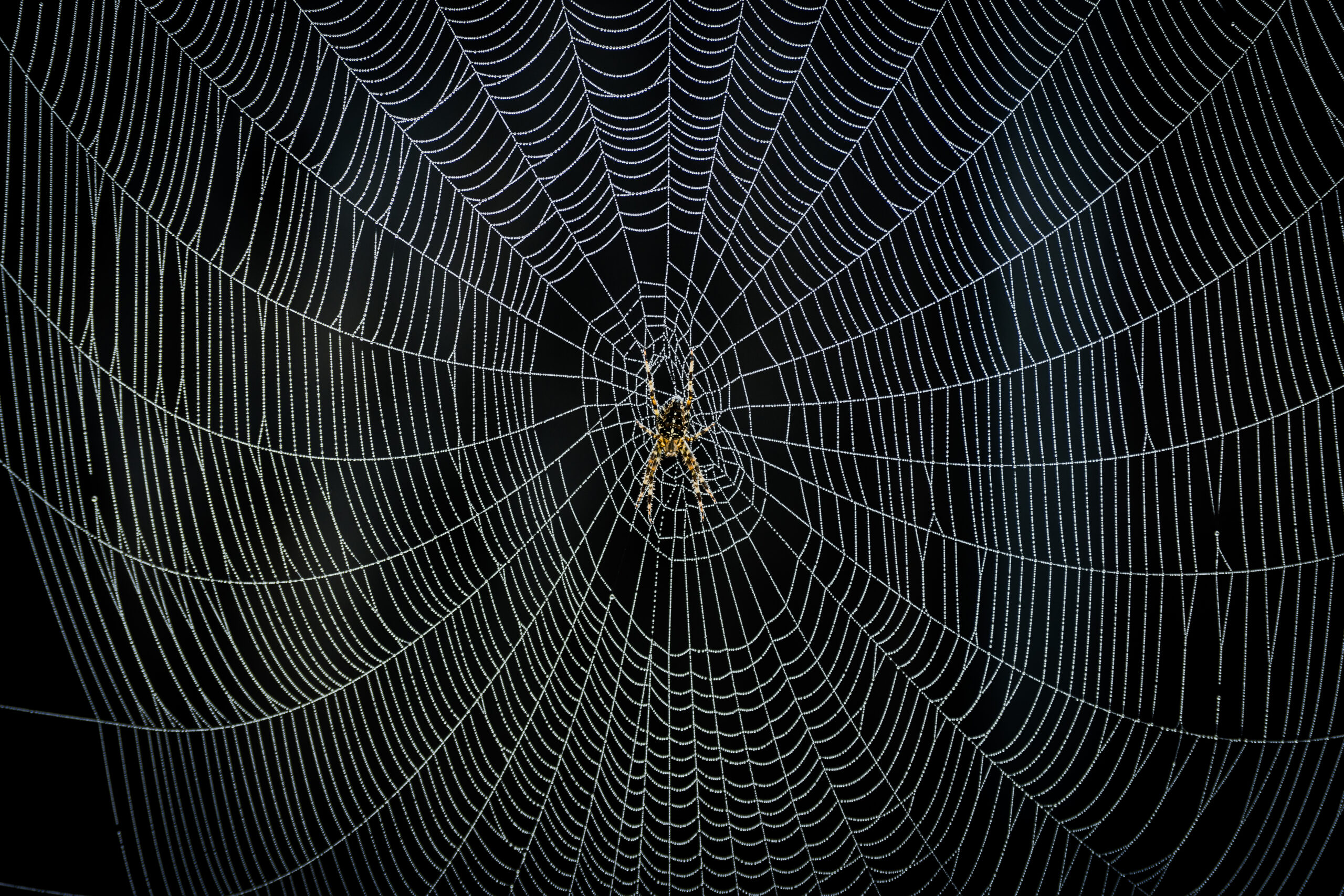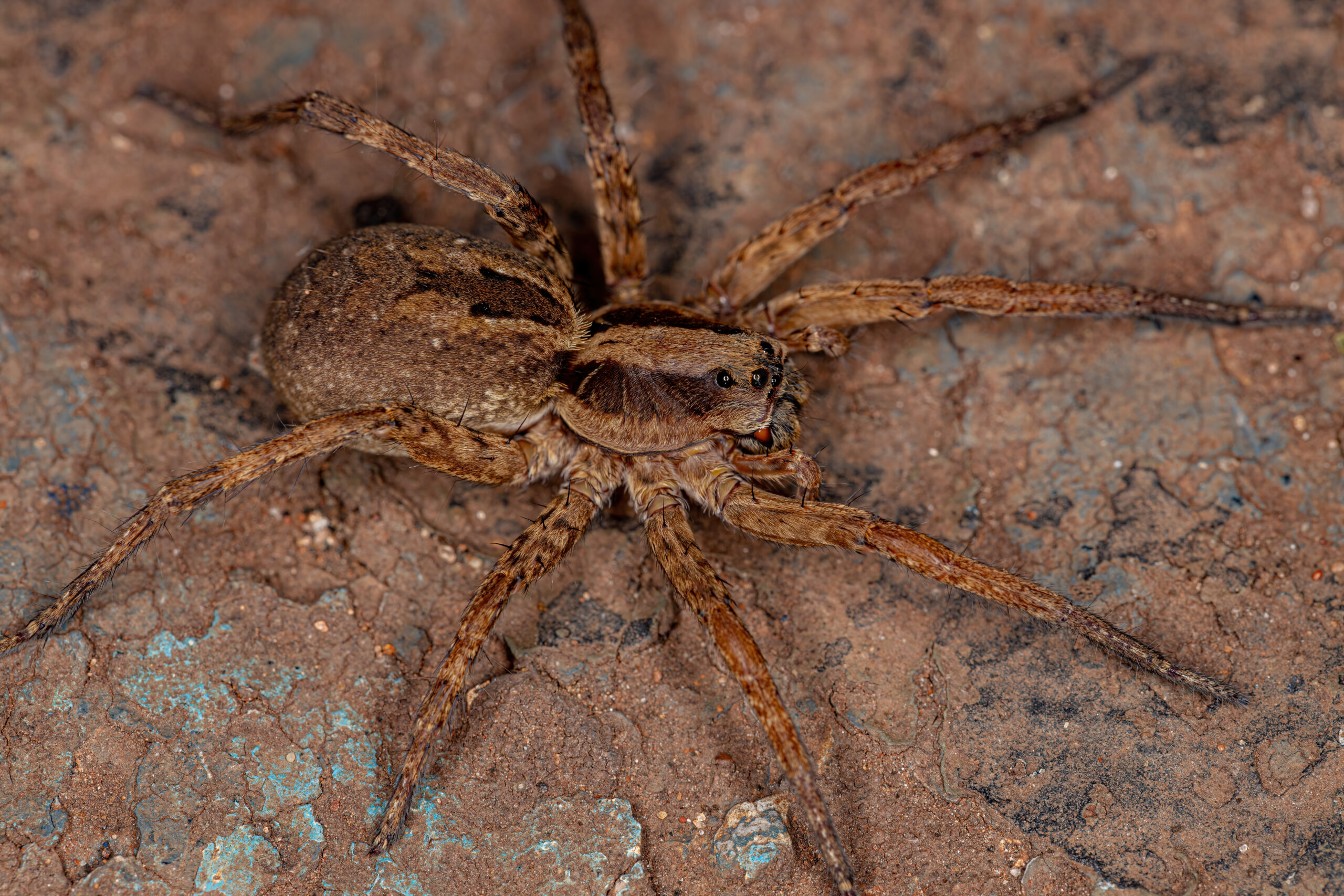Spiders are fascinating creatures that play a crucial role in controlling insect populations. However, their presence can also evoke fear and anxiety, especially when encountering them indoors or in the wild. While most spiders are harmless to humans, a few species can pose a potential threat. In this blog, we will provide you with a comprehensive guide to identify dangerous spiders from harmless ones, empowering you to coexist peacefully with these arachnids.

Harmless cellar spider, or “daddy long legs” on a leaf
Identifying Harmless Spiders
Before diving into the potentially harmful species, let’s first familiarize ourselves with some common harmless spiders you may encounter:
- Common House Spider (Parasteatoda tepidariorum): Often found indoors, these small spiders are harmless to humans and typically build tangled cobwebs in corners.
- Cellar Spider (Pholcus phalangioides): Also known as “daddy long-legs,” these spiders are harmless and are characterized by their long, thin legs.
- Garden Spider (Araneidae): These beautiful spiders are often seen in gardens, spinning intricate orb webs to catch insects, but they do not pose any danger to humans.
Recognizing Dangerous Spiders
Now, let’s focus on identifying the potentially dangerous spider species that you should be cautious about:
- Black Widow Spider (Latrodectus spp.): Recognizable by their jet-black bodies and red hourglass-shaped markings, black widows are venomous. They prefer dark, sheltered areas and are known to bite when threatened.
- Brown Recluse Spider (Loxosceles spp.): These spiders have a distinctive violin-shaped mark on their cephalothorax. Brown recluses tend to be reclusive and usually only bite when accidentally disturbed.

Dangerous black widow spider with its eggs
Web Identification
Examining the spider’s web can also provide valuable clues about its potential danger:
- Cobwebs: Spiders that construct irregular, tangled cobwebs are typically harmless. These webs are commonly seen with common house spiders and cobweb spiders.
- Orb Webs: Spiders that create large, circular webs with radiating spokes are usually harmless. They are designed to capture flying insects and are commonly made by garden spiders.
- Messy Webs: If you encounter a haphazardly constructed web with irregular patterns, exercise caution. It might belong to a potentially dangerous species.

Spider Behavior
Observing the spider’s behavior can give you further insights into its potential danger:
- Aggressiveness: Harmless spiders are generally timid and will retreat when confronted. Conversely, dangerous spiders may exhibit defensive behavior and bite when provoked.
- Solitary vs. Colonial: Most harmless spiders are solitary creatures, whereas dangerous spiders, like black widows, may be found in colonies.
Geographic Distribution
Knowing the local spider species and their distribution is essential:
Research your region: Understanding the types of spiders commonly found in your area will help you identify potential threats. Some spiders commonly found in central Virginia are the already discussed common house spider, garden or orb-weaving spiders, and cellar spiders. You might also find:
- Jumping Spiders (Family Salticidae): These small, colorful spiders are known for their excellent vision and agility. They do not build webs to catch prey but actively hunt by jumping on their victims.
- Wolf Spiders (Family Lycosidae): Wolf spiders are robust and often quite large. They are active hunters that do not build webs but instead chase down their prey. They are commonly found in grassy areas, gardens, and around buildings.
- Fishing Spiders (Genus Dolomedes): Fishing spiders are large, semi-aquatic spiders often found near ponds, streams, and other bodies of water. They can walk on water and even dive to catch aquatic insects and small fish.
- Crab Spiders (Family Thomisidae): These spiders are named for their crab-like appearance and sideways movement. They are often found on flowers and plants, where they lie in wait to ambush unsuspecting insects.
- Funnel Weavers (Family Agelenidae): Funnel weavers build funnel-shaped webs in grass and low vegetation. They wait at the narrow end of the funnel for prey to become ensnared in their webs.
Seek professional assistance: If you are unsure about a spider’s identity or encounter a potentially dangerous species, consult a pest control expert for safe removal and identification.

Close up of a wolf spider, commonly found in central Virginia
Reach out to PestNow of Central Virginia if you are in need of professional pest control services. We can take care of spiders as well as many other insects and pests. We also offer preventive services to stop unwanted house guests in their tracks before they start looking for food, water, and shelter. We are a veteran-owned and operated local business that proudly serves the Richmond, Fredericksburg and Northern Neck areas. At PestNow CVA, we make sure that you’re getting the best of both worlds from our staff. You get access to support from the nationwide PestNow organization and you also get personalized service, individual attention, and professional expertise from the local Virginians who own and operate our three locations. We hope that you’ll give us a call the next time that you’re in need of assistance.



